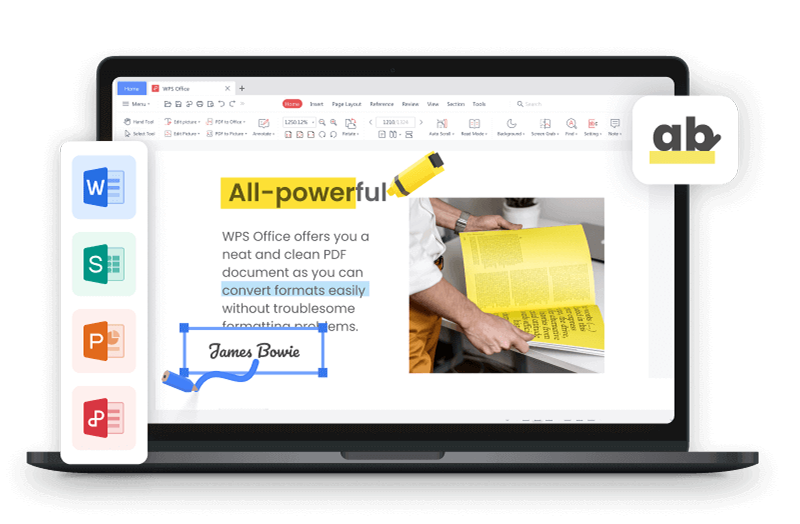Administrator accounts in Windows 10 act as the gatekeepers of your system. While powerful, mismanagement of these accounts can lead to malware attacks, accidental data loss, and access headaches—especially in shared or recycled devices. If you're struggling with permission errors or inherited admin profiles, this guide is for you. Discover how to regain control and reduce friction with efficient account management—and how WPS Office can ease your workflow without demanding admin rights.
Part 1: Understanding Administrator Roles & Risks in Windows 10
Why Permissions Matter?
Administrator privileges in Windows 10 grant users elevated control over the system—allowing software installation, system configuration, user account management, and access to sensitive directories. These rights are essential in various situations, such as setting up parental controls, managing corporate devices, or recovering access to a locked system. However, this power comes with significant risk. Studies show that nearly 35% of data breaches occur due to accounts with excessive privileges. For instance, a child with admin rights might unknowingly install malware while downloading games, or a non-technical employee might disable security settings, making the system vulnerable to attacks. Proper role assignment helps minimize such risks by enforcing the principle of least privilege.
Account Types Demystified
To better manage system access, Windows 10 offers several administrator-level account types:
Local Admin Account: This account operates independently of internet access. It doesn’t sync settings or data across devices and is ideal for air-gapped environments or setups where cloud integration is unnecessary.
Microsoft Account Admin: Linked to a Microsoft account, this admin type enables cloud-based syncing of settings, files, and preferences across multiple Windows devices. It offers convenience but depends on consistent internet access and comes with more exposure to online threats.
Built-in Hidden Administrator Account: This powerful account is disabled by default for safety reasons. When enabled, it bypasses many user access restrictions and is typically reserved for system recovery tasks or emergency maintenance. It should be used cautiously and only by experienced users or IT professionals.
Understanding the distinctions between these accounts can help you manage security and functionality more effectively across personal or organizational devices.
Part 2: Step-by-Step Guide to Changing Administrators on Windows 10
Managing administrator privileges on a Windows 10 system is critical for maintaining both security and control. Whether you're promoting a new user, recovering access after a lockout, or tightening control over a shared PC, knowing the correct steps can save time and prevent unintended risks. Below is a comprehensive breakdown of different methods to change or manage administrator rights in Windows 10.
1. Change Admin via Settings (Recommended for Most Users)
This is the safest and most user-friendly method, ideal for standard home or office users.
Steps:
Go to Start → Settings → Accounts → Family & other users
Under "Other users," select the account you want to promote
Click “Change account type”
In the dropdown menu, choose Administrator
Click OK to confirm
Why This Works:
This approach is GUI-based and doesn't require any command-line operations, reducing the risk of mistakes. It's perfect when transferring admin privileges to a trusted user, such as a family member or colleague.
2. Use Command Prompt (For Advanced Users & IT Administrators)
Ideal for users who are locked out of settings or want a faster, scriptable solution.
Steps:
Click Start, search “cmd”, then right-click on Command Prompt and select “Run as Administrator”
Enter the following command, replacing "Username" with the actual account name:
net localgroup Administrators "Username" /add
What It Does:
This command adds the user to the local "Administrators" group, giving them full system control. It's especially useful when GUI options are inaccessible, such as in Safe Mode or remote recovery.
Caution: Ensure you're entering the correct username and using quotes if it contains spaces. Improper use of command-line tools can create unintended system vulnerabilities.
3. Reset Forgotten Admin Password (If You’re Locked Out)
If you can’t remember the admin password and don’t have another admin account, this method allows recovery using external media.
What You’ll Need:
A Windows 10 installation USB or DVD (can be created via the Windows Media Creation Tool)
Steps:
Boot from the installation media
Select “Repair your computer”
Navigate to Troubleshoot → Advanced Options → Command Prompt
Once there, you can either:
Enable the hidden administrator account (see below)
Or, use command-line tools to reset the password via net user
net user "YourAdminUsername" NewPassword
If everything fails, you can initiate a system reset from the recovery environment.
Note: This method should only be used on your own devices. Unauthorized access or tampering with others’ systems may violate legal terms.
4. Disable the Hidden Administrator Account (For Security Clean-Up)
Once you’ve finished using the built-in hidden admin account for troubleshooting or recovery, it's strongly recommended to disable it again.
Steps:
Open Command Prompt as Administrator
Run the following command:
net user Administrator /active:no
Why Disable It?
The hidden Administrator account has elevated privileges and no User Account Control (UAC) prompts. If left active, it could become a target for malicious software or unauthorized users.
Final Tip: Audit Your Accounts
After making changes, always double-check the User Accounts panel (Control Panel → User Accounts → Manage another account) to verify that roles are correctly set. Keeping unnecessary administrator accounts active increases your risk surface.
Part 3: Optimize Admin Workflows with WPS Office
When it comes to managing productivity tools on Windows 10, especially in environments where admin rights are limited or tightly controlled, WPS Office stands out as a lightweight yet powerful alternative to Microsoft 365. Whether you're an IT admin trying to reduce friction, a teacher managing classroom PCs, or a small business owner looking for streamlined solutions—WPS Office can simplify your workflow while offering enterprise-level features without the usual administrative overhead.
Avoid Microsoft 365 Admin Hassles
One of the most common issues users face with Microsoft 365 is the need for administrator permissions for installation, updates, and account configuration. This becomes a bottleneck in environments where admin access is restricted, such as school labs, multi-user family computers, or startup teams relying on standard user accounts.
Here’s how WPS Office resolves those problems:
No Admin Rights Required: WPS Office can be installed and updated without administrator access, making it perfect for users who don't have elevated permissions on their devices.
Lightweight Installation: The entire suite is only around 300MB compared to Microsoft Office’s 4GB+ footprint. This means faster installation, fewer background services, and a better fit for older or resource-constrained systems.
Minimal Configuration: Since WPS doesn’t rely on complex background services or user-specific installations like OneDrive or Teams, it eliminates the need for IT-level configuration during onboarding.
Ideal for Shared or Restricted Devices: Schools, libraries, and shared family PCs often have limited user rights. WPS Office sidesteps this by not requiring elevation prompts, enabling users to open, edit, and save documents without triggering admin blocks.
AI-Enhanced Features for Admins & Power Users
Beyond being easy to deploy, WPS Office comes packed with AI-powered tools that drastically improve productivity—especially for users juggling multiple roles or working in environments where administrative tools are limited.
One-Click Conversions: Instantly convert PDFs to editable Word or Excel formats using smart AI tools. No need for third-party software or plugins.
Collaborate Without Barriers: Work on documents in real-time without needing Microsoft’s ecosystem. WPS Office enables shared editing and commenting without SharePoint or OneDrive admin dependencies, making collaboration faster and easier for teams without enterprise infrastructure.
Seamless Compatibility: Fully supports all mainstream file formats including .docx, .xlsx, and .pptx. This ensures you can open and edit Microsoft Office documents without worrying about formatting errors or file corruption.
AI Writing Assistant: Leverage ChatGPT-style document summarization and auto-completion features directly inside WPS Writer. This helps users create polished documents faster, reducing the time admins and editors spend on revisions.
Use Case Highlights
IT Admins: Save time on installation and user management. No GPO tweaks or elevated command prompts needed.
Educators & Schools: Install WPS across labs without granting students admin rights. Share worksheets and assignments effortlessly.
Startup Teams: Keep systems clean and fast. Let your team work collaboratively without investing in heavy cloud infrastructure or enterprise licenses.
Families & Freelancers: Avoid Microsoft’s recurring fees. Get full document editing power without compromising device security or requiring administrative access.
WPS Office offers a modern solution for managing document workflows without the administrative burden of traditional office suites. It’s built for real-world usage—where admin access isn’t always available, internet connections may be limited, and users need smart tools that just work. By combining portability, AI-enhanced features, and full format compatibility, WPS Office positions itself as the ideal office suite for Windows 10 users who value freedom, performance, and simplicity.
FAQs
Q1: Can I change the admin without a password?
Yes, use installation media to reset the system or enable the hidden admin via Command Prompt.
Q2: How do I revoke admin rights from another user?
Go to Settings → Accounts → Other users, select the account, and set it to Standard User.
Q3: Is the hidden Administrator account safe to use?
Use only for troubleshooting. Always disable it after use to prevent unauthorized changes.
Summary
Changing the administrator on Windows 10 isn’t just a technical step—it’s a vital action to regain control, restore access, or securely transition devices across users. With tools like Settings and Command Prompt, you can easily promote or demote users and reset forgotten credentials. But to avoid frequent admin interruptions—especially with office software—WPS Office provides a lightweight, admin-rights-free solution for daily productivity needs. It’s not just simpler, it’s smarter, especially for teams managing multiple systems or users.
By balancing user privileges with the right tools, you’ll enhance both security and efficiency across your Windows 10 environment.




